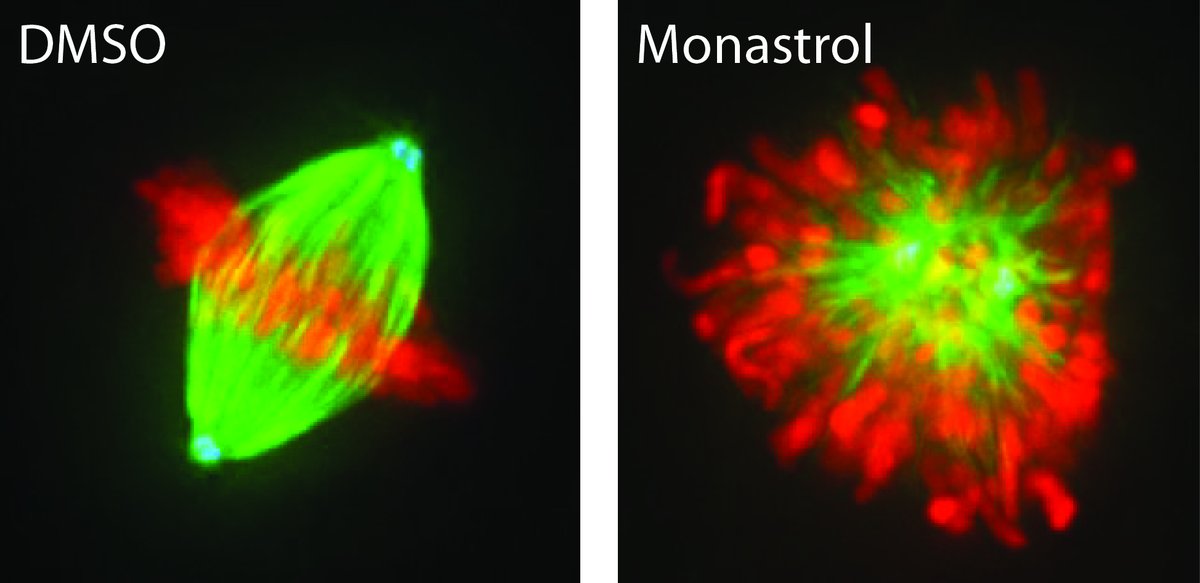I. The process of bipolar spindle formation
During my postdoctoral study, I identified the small molecule monastrol which inhibits the mitotic motor-protein Eg5, a tetrameric kinesin of the Kinesin-5 family. According to the current model, Eg5 cross-links antiparallel spindle microtubules and due to its plus-end directed motility drives the separation of the two spindle poles resulting in the formation of bipolar spindles. Consequently, inhibition of Eg5 by monastrol induces the formation of monopolar spindles with unseparated spindles poles at the center and the radial arrangement of chromosomes at the plus-ends of spindle microtubules.

To better understand the process of spindle formation, we performed a chemical biology suppression screen to identify small molecules that rescue spindle bipolarity in monastrol-treated BSC-1 cells. By screening a 17.000 member pharmacophore library we identified several compounds that induced spindle bipolarity in Eg5-inhibited cells. Notably, these compounds also induce the formation of bipolar spindles in BSC-1 cells depleted of Eg5 indicating that the small molecules do not interfere with the inhibitory effect of monastrol but rather functionally rescue spindle bipolarity in cells lacking Eg5 activity. Currently, we are performing affinity chromatography with immobilized compounds to identify their cellular binding partners. In future studies, we plan to apply the identified compounds to gain further insights into the process of bipolar spindle formation.
